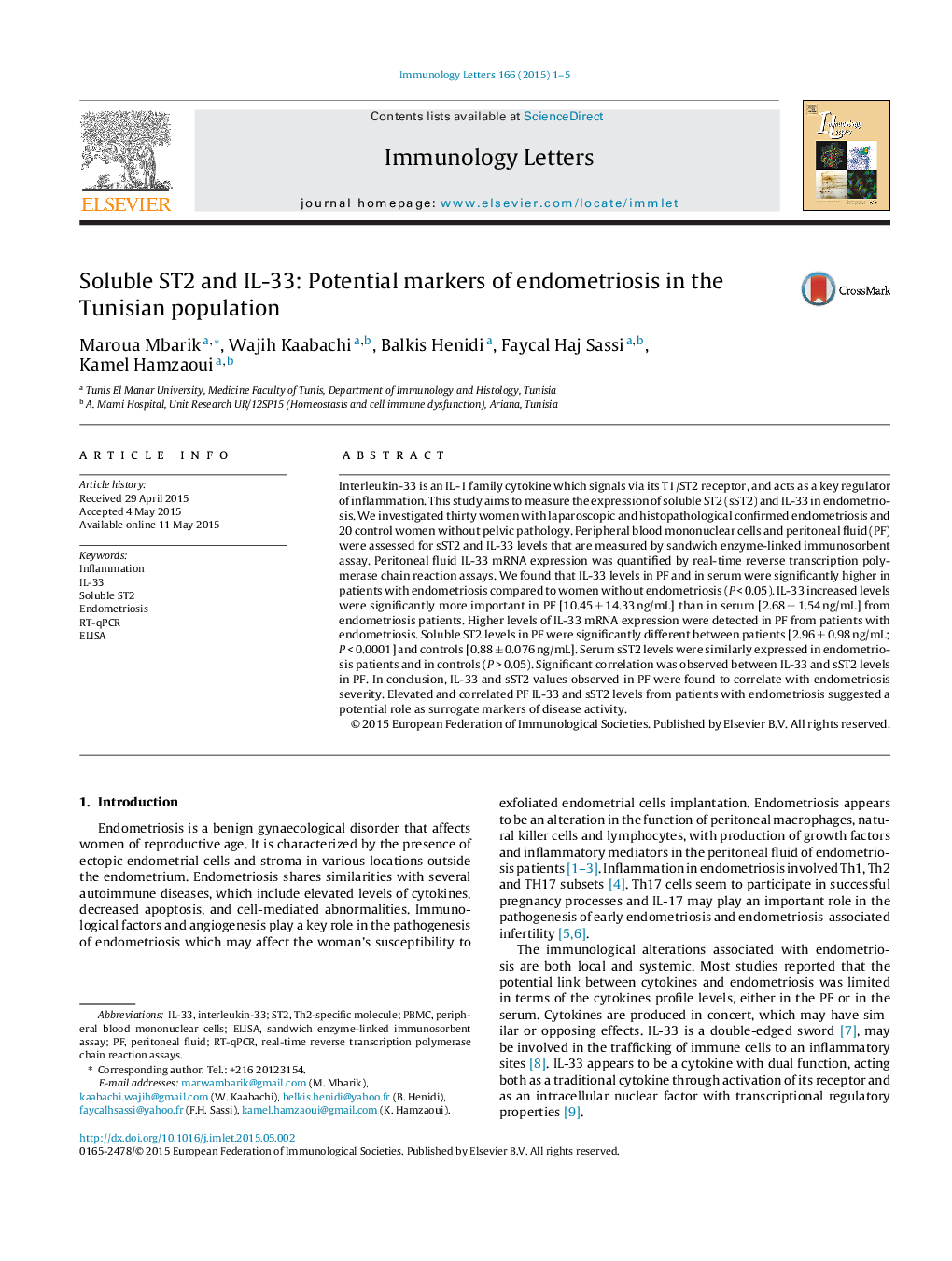| Article ID | Journal | Published Year | Pages | File Type |
|---|---|---|---|---|
| 3355350 | Immunology Letters | 2015 | 5 Pages |
•IL-33 levels in PF and in serum were significantly higher in patients with endometriosis compared to healthy controls.•Soluble ST2 levels in PF were significantly different between patients and controls.•Higher levels of IL-33 mRNA were detected in PF from patients with endometriosis.•Significant correlation between IL-33 and sST2 levels in PF was observed.
Interleukin-33 is an IL-1 family cytokine which signals via its T1/ST2 receptor, and acts as a key regulator of inflammation. This study aims to measure the expression of soluble ST2 (sST2) and IL-33 in endometriosis. We investigated thirty women with laparoscopic and histopathological confirmed endometriosis and 20 control women without pelvic pathology. Peripheral blood mononuclear cells and peritoneal fluid (PF) were assessed for sST2 and IL-33 levels that are measured by sandwich enzyme-linked immunosorbent assay. Peritoneal fluid IL-33 mRNA expression was quantified by real-time reverse transcription polymerase chain reaction assays. We found that IL-33 levels in PF and in serum were significantly higher in patients with endometriosis compared to women without endometriosis (P < 0.05). IL-33 increased levels were significantly more important in PF [10.45 ± 14.33 ng/mL] than in serum [2.68 ± 1.54 ng/mL] from endometriosis patients. Higher levels of IL-33 mRNA expression were detected in PF from patients with endometriosis. Soluble ST2 levels in PF were significantly different between patients [2.96 ± 0.98 ng/mL; P < 0.0001] and controls [0.88 ± 0.076 ng/mL]. Serum sST2 levels were similarly expressed in endometriosis patients and in controls (P > 0.05). Significant correlation was observed between IL-33 and sST2 levels in PF. In conclusion, IL-33 and sST2 values observed in PF were found to correlate with endometriosis severity. Elevated and correlated PF IL-33 and sST2 levels from patients with endometriosis suggested a potential role as surrogate markers of disease activity.
